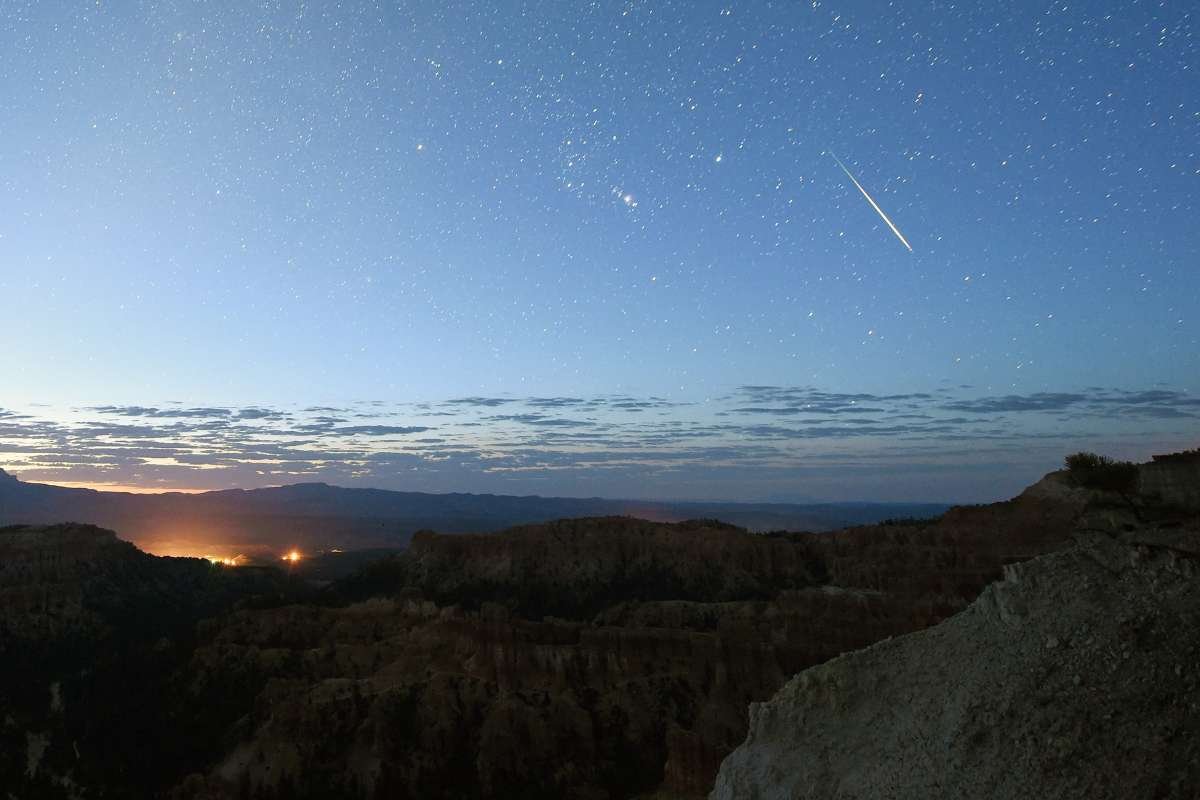Skywatchers in the Northern Hemisphere are in for a treat this week as the Eta Aquarid meteor shower, fueled by the ancient dust of Halley’s Comet, reaches its peak. The shower is expected to be most active late Monday night into the early hours of Tuesday, though meteors may be visible as early as Sunday night and continue through midweek. The Eta Aquarids occur annually when Earth passes through the debris trail left behind by Halley’s Comet, a periodic visitor to our skies every 76 years. Though the comet itself won’t reappear until 2061, the particles it shed during previous visits ignite in our atmosphere each spring, creating this subtle yet storied meteor display.
What to Expect: Modest But Swift Streaks Across the Sky
Unlike some of the more intense meteor showers like the Perseids or Geminids, the Eta Aquarid meteor shower is relatively modest in terms of volume. Observers can expect to see a few meteors per hour, but what the shower lacks in quantity, it makes up for in speed and elegance. Traveling at nearly 147,000 mph, these meteors burn brightly and often leave glowing trails that can linger for several seconds. The particles are typically small, ranging from grains of sand to grains of ric, —but they create vivid streaks that captivate those patient enough to watch.
Each year, Earth intersects this cosmic debris field in late April and early May, producing the Eta Aquarid meteor shower. These meteors appear to radiate from the constellation Aquarius, near the star Eta Aquarii, though they can be spotted anywhere in the sky. Halley’s Comet, officially designated 1P/Halley, is also responsible for the Orionid meteor shower in October, cementing its role as one of the most influential comets in observational astronomy. First correctly predicted to return by English astronomer Edmond Halley in 1758, the comet became the first to be recognized as periodic—a milestone that validated Newtonian physics and reshaped our understanding of celestial motion.
Best Viewing Tips for Meteor Watchers
To catch the Eta Aquarid meteor shower at its best, stargazers are advised to head outside in the pre-dawn hours, when Earth is optimally positioned to move into the densest part of the comet’s dust stream. Find a location with minimal light pollution and look toward the darkest section of the sky. While the meteors radiate from Aquarius, they can appear from any direction.
Give your eyes at least 10 to 15 minutes to adjust to the dark, and avoid using phones or bright lights, as these can hinder night vision. No special equipment is needed—just patience and a clear sky.
As meteors arc through the quiet early morning sky, they carry with them particles shed hundreds or even thousands of years ago. Watching the Eta Aquarid meteor shower offers more than a celestial spectacle—it’s a moment of connection to a cosmic story centuries in the making.
Visit more of our news! The Lifesciences Magazine







